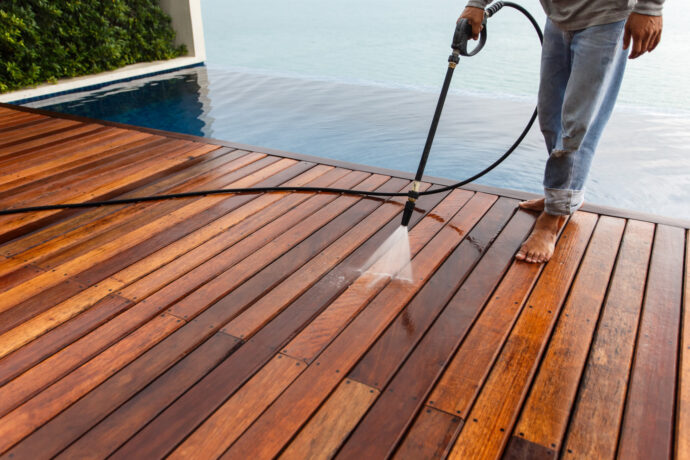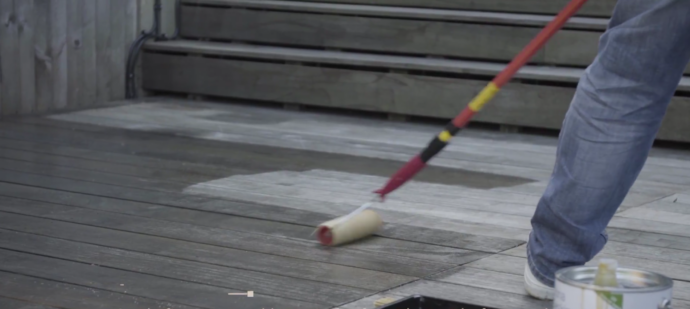Benefits of Outdoor Decking
Decks are a great way to spruce up any outdoor living space, providing a comfortable and stylish area to entertain guests or simply relax outdoors. While there are many benefits to adding an outdoor deck to your home, here we will discuss the top five advantages of outdoor decking.
- Increased Home Value: One of the greatest benefits of installing a deck is that it can add substantial value to your home. A well designed and built deck can increase the resale value of your house significantly, making it an excellent investment for any homeowner looking to add some instant equity into their property. When done right, outdoor decking can be a beautiful addition to any home, creating a warm and inviting area for relaxing and entertaining.
- Extended Living Space: Decks provide the perfect opportunity for homeowners to extend their living space outdoors by creating additional seating areas or dining spaces in their yard that can be used throughout the year, regardless of weather conditions.
- Improved Aesthetics: Outdoor decks also offer homeowners an attractive way to improve the overall look and feel of their backyard by adding texture and color with different materials such as wood, stone or composite materials which come in a variety of hues and textures making it easy for you customize your backyard oasis depending on your taste and budget needs while boosting curb appeal at the same time!
Types of Outdoor Decking Materials
When it comes to choosing the right type of material for your outdoor decking, there are a lot of different options available. From traditional wood to composite materials, there are plenty of materials that you can choose from when designing and constructing your deck. Each material has its own unique characteristics and benefits, so it is important to do your research before deciding on the best option for you and your home.
Wood is one of the most popular choices when it comes to outdoor decking materials. It offers an attractive look that can be customized with stains or paints in various colors and shades. While wood does require some maintenance due to weathering over time, many homeowners enjoy its natural beauty and durability, making it a great choice for many decks. The most common types of wood used for outdoor decks include pressure-treated lumber, cedar, redwood, tropical hardwoods like ipe or mahogany as well as composite woods like Trex or similar products.
Composite decking is also becoming increasingly popular because of its low maintenance requirements compared to traditional wooden decks. Composite materials are made out of recycled plastic bags combined with sawdust or other natural fibers such as bamboo which makes them not only durable but also eco-friendly too!
Maintenance and Care for Outdoor Decks

Outdoor decks are a great way to extend your living space and add value to your home. But like any feature of your home, they require regular maintenance and care in order to remain looking good and functioning properly. Here are some tips for keeping your outdoor deck in top condition.
First, inspect the deck for any damage or signs of wear. Look for loose boards, warped boards, splinters, cracked railings or posts, rusting nails or screws, rotting wood or other signs of decay. Make repairs as needed—replace loose screws with galvanized ones; hammer down protruding nails; sand rough spots; replace rotten wood with pressure-treated lumber; paint over rust spots on metal components—to help prevent further deterioration.
Next, clean the deck using a pressure washer (or scrub brush and detergent if you don’t have access to a pressure washer). This will remove dirt and grime from the surface so that it looks its best again. Be sure to use a wide spray pattern when cleaning so that you don’t damage the wood with too much direct force from the water stream. Rinse off all soap residue thoroughly afterwards as well so that it doesn’t attract dirt later on.
Safety Considerations for Outdoor Decking

Outdoor decking is a great way to add usable space and enjoyment to your home, but safety should always be your primary consideration. Decking materials can become slippery when wet, leading to falls and injuries. Fortunately, there are several steps you can take to ensure that your deck is safe for family and friends.
The first step in creating a safe outdoor living space is choosing the right materials for the job. Many composite materials are available that provide enhanced traction even when wet. Alternatively, you can apply non-slip coatings or use textured paint on regular wood decking surfaces for improved traction when necessary. If you’re working with a wooden surface, consider using pressure treated lumber as it will be less likely to warp or rot over time than untreated wood varieties.
Once the material is selected, proper installation techniques should also be considered. Be sure to use screws instead of nails when fastening planks together so they won’t come loose over time due to foot traffic or inclement weather conditions such as wind or rainstorms. Also try adding cleats between planks which will help keep them from shifting underfoot while providing an additional level of safety against slips and falls on sloped areas of the deck as well as stairs.
Cost of Building an Outdoor Deck
Outdoor decks are an increasingly popular way to add extra living space to your home. The cost of building a deck depends on the size, materials used and the complexity of construction. Knowing what factors influence the cost can help you make an informed decision when it comes time to build your deck.
The first factor that affects the cost is size. Generally, larger decks will be more expensive than smaller ones due to increased material and labor costs. Additionally, decks with multiple levels or curved edges may require specialized tools and labor, which can also increase costs significantly.
Materials will also affect the overall cost of building a deck. Pressure-treated wood is typically one of the most affordable options and can last up to 20 years if properly maintained; however, composite materials are becoming increasingly popular for their durability and low maintenance requirements. While composite materials tend to be more expensive upfront, they can save money in the long run as they do not require as much upkeep or replacement over time compared with pressure-treated wood decks.
Finally, labor costs should also be taken into consideration when budgeting for a new deck project. Depending on local laws or regulations in your area, some contractors may need additional licenses or certifications in order to legally build a deck.
Conclusion
Outdoor decking is an excellent way to add value and beauty to your home. It provides a great space for entertaining and relaxation, as well as creating an area that can be enjoyed year-round. With a wide range of options available, it’s easy to find the perfect decking solution for any backyard or outdoor living space. Whether you choose wood, composite or plastic decking materials, you can rest assured that your outdoor deck will last for years to come.
















